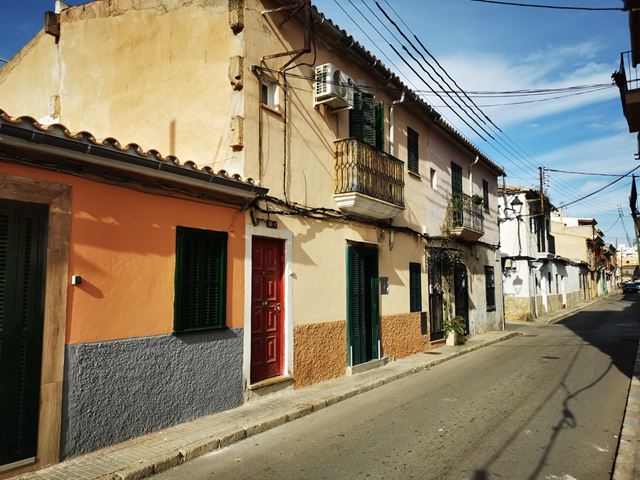Enhanced resident participation and well-being, as well as improvements in their built environment, are crucial to the development of socially and environmentally sustainable communities. This is one of the nine thematic focus areas of the EU-funded project called ARV, which is being coordinated by NTNU and where SINTEF is leading the work package in community engagement.
The ARV project is demonstrating urban regeneration projects in six locations around Europe with the aim of transforming them into Climate-Positive Circular Communities. This includes activities such as the energy efficient renovation of existing homes, local energy communities and the re-use of materials and components in renovation strategies.
“We’re currently identifying ways of channeling competences and experiences of local residents”, says SINTEF researcher Caroline Cheng.
“The aim is to involve them in both the planning and the development of Climate Positive Circular Communities. Active resident engagement and feedback are often the weakest link towards sustainable neighbourhood transformation”, she says.
Cheng is heading the work to promote resident participation in the six locations of the ARV project demos. They are located in the Czech Republic, Denmark, Italy, The Netherlands, Norway, and Spain.
Community-driven change
The heart of the work of resident participation is to put people in focus, foregrounding their specific needs, interaction and wellbeing.
For this reason, the researchers have adopted a methodology called the ‘Living Lab’ approach as a means of promoting resident participation. This approach will be used in all the six locations of the ARV project demos.
Living Labs may exist as physical or virtual spaces, and may operate with different objectives and focus. In the context of ARV, which gives special attention to social housing and public buildings, Living Labs may be research-driven, municipality-driven, company-driven or housing association-driven.
Large-scale retrofitting in Palma de Mallorca
The Spanish demo, taking place in Palma de Mallorca, involves the major rebuilding and energy renovation of residents’ homes.
“We’ve created a meeting place, called the ‘Es Laboratori’, which is designed with local residents in mind, and for the vulnerable sections of the community in particular. Es Laboratori offers workshops, seminars, and a variety of other activities that will enable residents to develop solutions together”, says Marta Nicolau Prohens, who is employed by Palma municipality and is currently acting as the Living Lab coordinator for resident participation initiatives in the Palma demo.

Palma has many old houses. A number of these will now be upgraded to become more energy efficient as part of the EU-funded project called ARV, in which resident participation is a key component. Photo: Photo: Marta Nicolau Prohens
Palma municipality is particularly interested in reaching out to its young people, and a collaboration with local schools has been established as part of the project. One of the activities is to involve pupils in the development of green spaces at their schools with the aim of using participation to boost their senses of ownership of, and belonging to, the project.
“Digital visualisation technologies such as virtual reality (VR) will be used to encourage resident participation”, says SINTEF researcher Judith Thomsen. “Here, our objective is to enable residents to visualise the different ways in which their neighbourhood might be changed”, she says. Thomsen is working together with Caroline Cheng in connection with the resident participation aspects of the project.
Thomsen explains that visualisation is an effective means of reaching out to many different people for their feedback. The idea here is that people absorb information more quickly when presented with simple, visual explanations.
Visualisation will enable the establishment of a shared platform for discussion and decision-making that will include all project participants involved in the planning process, from the residents themselves to urban planners and decision-makers.
A five-phase process
Based on the work during the first year of the project, the researchers have developed a method that they call ‘S.M.I.L.E’, which is now being applied to guide the process of the community engagement work.
The approach has been inspired by research literature, and is made up of five phases; Scoping, Mapping, Implementation, Learning and Evaluation. It has been developed in consultation with the partners involved in the six demos making up the ARV project, which has a total of 35 partners representing municipalities, private businesses, sector organisations and research institutes.
“In a nutshell, our proposal is to focus on these five phases as the basis for establishing the Living Labs linked to the ARV project demos”, says Cheng. The five phases can be summarised as follows:
S.COPING:
This phase involves the compilation of all available information about the residents and their demographics.
How do we characterise the residents living in this particular community?
M.APPING:
This phase involves identifying those stakeholders who are relevant in terms of resident participation in the Living Lab in question.
Which groups do we want to reach with the Living Lab activities?
I.MPLEMENTATION:
This phase involves deciding on the types of activities and approaches to be employed in accordance with relevant issues and the nature of the target groups.
How do we reach the target groups? What is the ambition level of engagement?
L.EARNING:
This phase involves gathering qualitative and quantitative data related to each activity. Which activities have been effective in relation to the stated objectives and ambition level of engagement?
E.VALUATION:
This phase involves drawing lessons from the previous four phases: What can we do better?
Green ambassadors
“The ARV project also aims to recruit residents to take part in other projects”, says Cheng. “They can contribute towards the dissemination of project ideas to sections of the community that we don’t often reach during such processes. We call these residents our green ambassadors”, she says.
Varying degrees of engagement can be employed to obtain information about residents’ views and what they feel about the development of the demo projects. These can range from establishing dialogue and creative processes involving developers, homeowners, municipalities for example, to inviting residents to information meetings.
It is possible to achieve change even without high levels of resident participation. Rather than climbing a ladder, it is more akin to getting a wheel of citizen engagement with the appropriate momentum, that fits the demo’s contexts.
“It isn’t always the case that higher levels of involvement result in the best outcomes”, says Cheng. “What is more important is to achieve the best form of involvement at the right time”, she says.
Key facts about the ARV project
ARV is the name given to an innovation project being funded by the EU via the so-called European Green Deal growth strategy. The project was launched in January 2022 and will be completed by the end of 2025.
The project’s vision is to contribute towards the rapid and large-scale implementation of climate-positive, circular communities in which residents can live and enjoy high levels of well-being for many generations into the future. The overall objective is to demonstrate and validate attractive, robust and inexpensive solutions that will accelerate the work to upgrade existing buildings with a focus on sustainable energy and climate change mitigation initiatives.
The innovations being developed as part of the ARV project will be tested and evaluated as part of six different demonstration projects located at various sites in Europe. These are so-called ‘transformation’ projects, representative of a variety of European climate zones and contexts. All carry high ambitions in the fields of environmental, social and economic sustainability.
The project involves 35 partners from eight different countries; Norway, Denmark, the Netherlands, the Czech Republic, Italy, Switzerland, Spain and Belgium. The project is being headed by NTNU, and SINTEF Community is coordinating the work relating to resident participation, environmental issues and resident well-being.
The demo projects are located in Trento in Italy, Palma de Mallorca in Spain, Utrecht in the Netherlands, Karviná in the Czech Republic, Sønderborg in Denmark and Oslo in Norway. Special emphasis is being placed on the upgrade of homes and public buildings. The Norwegian project at Voldsløkka School in Oslo is being coordinated by the municipal housing development agency, Oslobygg KF. Living Lab activities are being coordinated by NTNU.
Together, they will be demonstrating more than 50 innovations distributed across 150,000 square metres of built area. For more information, visit the ARV project website: ARV.
Reference:
Caroline Cheng & Judith Thomsen: Plan and overall methodology for establishing CPCC Living Labs, including stakeholder mapping. December 2022.




